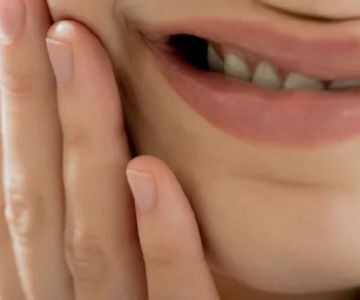Can I Get Disease from Oral Contact? – Understanding the Risks and Prevention
When it comes to oral health, one common question that many people ask is, "Can I get disease from oral contact?" This is a legitimate concern, as oral hygiene plays a crucial role in preventing various diseases, including infections that can be transmitted through the mouth. In this article, we will explore the risks of oral diseases, how infections spread, and what steps you can take to reduce your risk of disease transmission through oral contact.
1. Understanding Oral Diseases and Infections
Oral diseases refer to a wide range of conditions that affect the teeth, gums, and mouth. While some of these conditions are primarily caused by poor oral hygiene, others are infections that can spread through oral contact or result from other health conditions. Let’s dive into some of the most common oral diseases and how they can be transmitted.
1.1 Tooth Decay
Tooth decay, also known as cavities, is one of the most common oral health issues in the United States. It occurs when bacteria in the mouth feed on sugars from food, producing acids that erode the enamel of your teeth. While tooth decay is primarily caused by poor oral hygiene, it can be exacerbated by sharing food, drinks, or utensils, especially in close-contact environments.
1.2 Gum Disease (Periodontal Disease)
Gum disease, or periodontal disease, affects the tissues that support your teeth. It begins with gingivitis, an inflammation of the gums, and can progress to more severe forms that cause tooth loss. Gum disease is caused by plaque buildup along the gum line, and it can be spread through direct contact with infected saliva or blood. It is crucial to practice good oral hygiene and visit the dentist regularly to avoid gum disease.
1.3 Oral Herpes (Cold Sores)
Oral herpes, commonly known as cold sores, is caused by the herpes simplex virus (HSV). This virus is highly contagious and can be transmitted through oral contact, such as kissing or sharing utensils with someone who has an active cold sore. Although oral herpes cannot be cured, antiviral medications can help manage outbreaks and reduce the risk of transmission.
1.4 Oral Thrush
Oral thrush is a fungal infection caused by the Candida yeast, which leads to white patches in the mouth. While anyone can develop oral thrush, it is most common in individuals with weakened immune systems, such as those with diabetes or HIV. Thrush can spread through oral contact and is often linked to poor oral hygiene, the use of antibiotics, or other health conditions.
2. Can Disease Be Transmitted Through Oral Contact?
Yes, disease can be transmitted through oral contact, particularly when it comes to infections that spread via saliva or blood. Saliva is a bodily fluid that can carry a range of pathogens, including viruses, bacteria, and fungi. This makes oral hygiene critical in reducing the risk of spreading or contracting infections. Let’s explore how disease can spread through oral contact and which precautions to take.
2.1 Bacterial Infections
Bacterial infections are one of the most common types of oral diseases. When bacteria enter the mouth through food or beverages, they can cause various problems, including tooth decay, gum disease, and bad breath. Some bacterial infections, like strep throat, can also be transmitted through kissing or other forms of close oral contact.
2.2 Viral Infections
Viral infections, such as the flu and the common cold, can spread through the mouth via droplets in saliva. Additionally, the herpes simplex virus, which causes cold sores, is highly contagious and can be passed through oral contact with someone who is infected. It's essential to be cautious when engaging in oral activities with someone who has an active viral infection.
2.3 Fungal Infections
Fungal infections, like oral thrush, can also be spread through oral contact. Candida, the yeast responsible for thrush, can be passed from person to person through sharing utensils, cups, or engaging in oral activities. Those with compromised immune systems are at a higher risk of developing fungal infections, making it all the more important to maintain good oral hygiene.
2.4 Bloodborne Diseases
Some bloodborne diseases, such as HIV and hepatitis, can be transmitted through oral contact when there are open cuts or sores in the mouth. Although the risk is low, it’s essential to avoid engaging in oral contact if either person has oral wounds or sores, as these can act as entry points for pathogens.
3. Prevention Tips for Maintaining Good Oral Health
Good oral hygiene is the best defense against the spread of oral diseases and infections. By following some simple preventive measures, you can reduce your risk of developing oral health issues and protect yourself from infections that can be transmitted through oral contact. Below are some tips for maintaining optimal oral health:
3.1 Brush Your Teeth Regularly
Brushing your teeth at least twice a day is essential for removing plaque and bacteria that contribute to oral diseases. Use fluoride toothpaste and a soft-bristled toothbrush, and ensure that you brush for at least two minutes to effectively clean your teeth and gums.
3.2 Floss Daily
Flossing is a crucial part of any oral hygiene routine, as it removes food particles and plaque between your teeth, where your toothbrush can’t reach. Flossing at least once a day helps prevent tooth decay and gum disease.
3.3 Use Mouthwash
Mouthwash is an excellent addition to your oral care routine, as it helps kill bacteria, freshen breath, and reduce the risk of oral infections. Look for mouthwashes that contain antimicrobial agents or fluoride to maximize their benefits.
3.4 Avoid Sharing Oral Items
Sharing items such as utensils, drinking glasses, and lip balm can increase your risk of transmitting oral infections. If someone has an active oral infection, avoid direct contact to prevent spreading the disease.
3.5 Visit Your Dentist Regularly
Regular dental checkups are essential for detecting and preventing oral health issues before they become severe. Your dentist can also identify signs of infections or other conditions that may require treatment. Professional cleanings help remove plaque and tartar buildup that could lead to tooth decay or gum disease.
4. Real-Life Experience: A Case of Oral Herpes Transmission
Let’s take a look at a real-life example of oral herpes transmission. Sarah, a 28-year-old woman, had been dating her partner, who had a history of cold sores. One day, while Sarah’s partner had an active cold sore, they shared a kiss. Shortly after, Sarah began to develop a small blister on her lip. She went to the doctor and was diagnosed with oral herpes, which she contracted through oral contact. This incident highlights the importance of being cautious about oral contact when one person has an active infection.
Fortunately, Sarah’s doctor provided her with antiviral medication to help manage the outbreak, and she learned the importance of avoiding close oral contact during outbreaks of oral herpes to prevent transmission. This experience serves as a reminder of how easily oral infections can spread and the importance of taking precautions.
5. How to Protect Yourself and Others from Oral Diseases
Protecting yourself and others from oral diseases starts with practicing good hygiene and being mindful of potential risks. Here are some steps you can take to keep both yourself and others safe:
5.1 Practice Good Hygiene
Maintaining good oral hygiene by brushing, flossing, and using mouthwash regularly helps keep your mouth clean and reduces the risk of infection. This also helps prevent the spread of harmful bacteria and viruses to others.
5.2 Be Mindful of Oral Contact
If you or someone you know has an oral infection, such as cold sores or other sores in the mouth, it’s best to avoid close oral contact to prevent transmission. It’s also important to avoid sharing personal items, such as toothbrushes or lip balms, that can transfer bacteria or viruses.
5.3 Seek Medical Advice
If you suspect you have an oral infection, such as a cold sore or oral thrush, consult with your healthcare provider. Early treatment can prevent the infection from spreading and reduce the severity of symptoms.



 Westgate Dental Arts3.0 (2 review)
Westgate Dental Arts3.0 (2 review) Coventry Family Dental4.0 (247 review)
Coventry Family Dental4.0 (247 review) Familia Dental3.0 (1028 review)
Familia Dental3.0 (1028 review) Dr. Daniel S. Fife, DDS4.0 (31 review)
Dr. Daniel S. Fife, DDS4.0 (31 review) Dentistry At Suburban Square: Michael I. Wollock, DMD4.0 (1228 review)
Dentistry At Suburban Square: Michael I. Wollock, DMD4.0 (1228 review) Comfort Care Dental4.0 (1156 review)
Comfort Care Dental4.0 (1156 review) The Importance of Oral Health Education During Pregnancy for a Healthy Pregnancy
The Importance of Oral Health Education During Pregnancy for a Healthy Pregnancy Why Skipping Dental Checkups Can Lead to Bigger Oral Health Problems
Why Skipping Dental Checkups Can Lead to Bigger Oral Health Problems Best Tips for Brushing Your Teeth Properly for Healthy Gums: Essential Techniques for Oral Health
Best Tips for Brushing Your Teeth Properly for Healthy Gums: Essential Techniques for Oral Health Advantages of Porcelain Dental Restorations
Advantages of Porcelain Dental Restorations How Can Diabetes Cause Tooth and Gum Problems? Preventing and Managing Oral Health Issues
How Can Diabetes Cause Tooth and Gum Problems? Preventing and Managing Oral Health Issues Healthy Habits for Promoting Good Oral Health and Hygiene: Tips for a Healthy Smile
Healthy Habits for Promoting Good Oral Health and Hygiene: Tips for a Healthy Smile